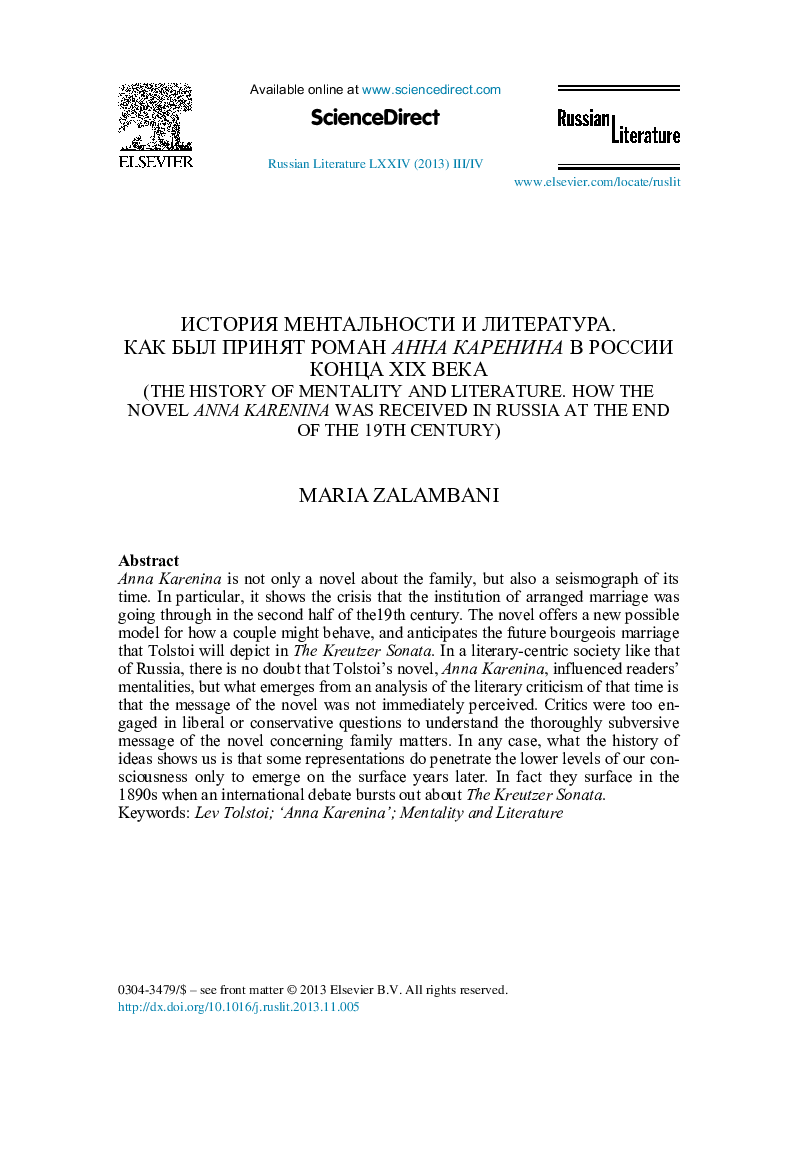| Article ID | Journal | Published Year | Pages | File Type |
|---|---|---|---|---|
| 1103877 | Russian Literature | 2013 | 36 Pages |
Anna Karenina is not only a novel about the family, but also a seismograph of its time. In particular, it shows the crisis that the institution of arranged marriage was going through in the second half of the19th century. The novel offers a new possible model for how a couple might behave, and anticipates the future bourgeois marriage that Tolstoi will depict in The Kreutzer Sonata. In a literary-centric society like that of Russia, there is no doubt that Tolstoiʼs novel, Anna Karenina, influenced readersʼ mentalities, but what emerges from an analysis of the literary criticism of that time is that the message of the novel was not immediately perceived. Critics were too engaged in liberal or conservative questions to understand the thoroughly subversive message of the novel concerning family matters. In any case, what the history of ideas shows us is that some representations do penetrate the lower levels of our consciousness only to emerge on the surface years later. In fact they surface in the 1890s when an international debate bursts out about The Kreutzer Sonata.
